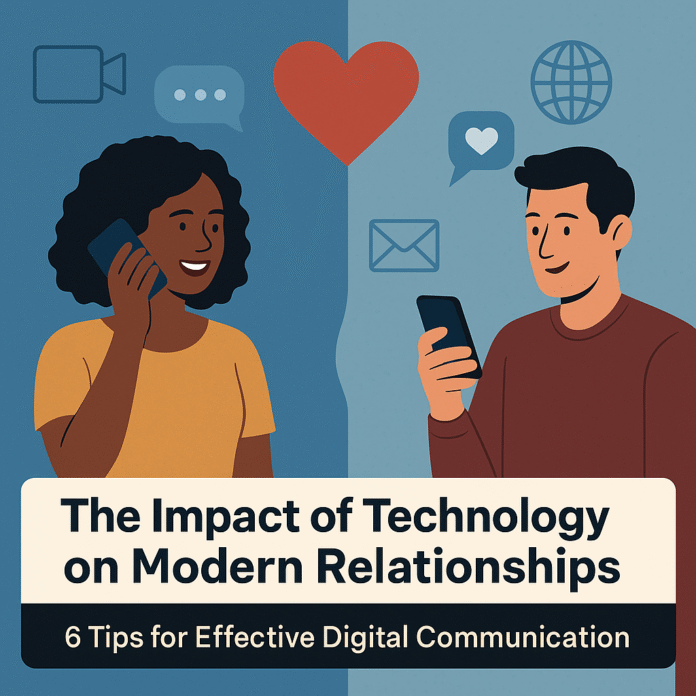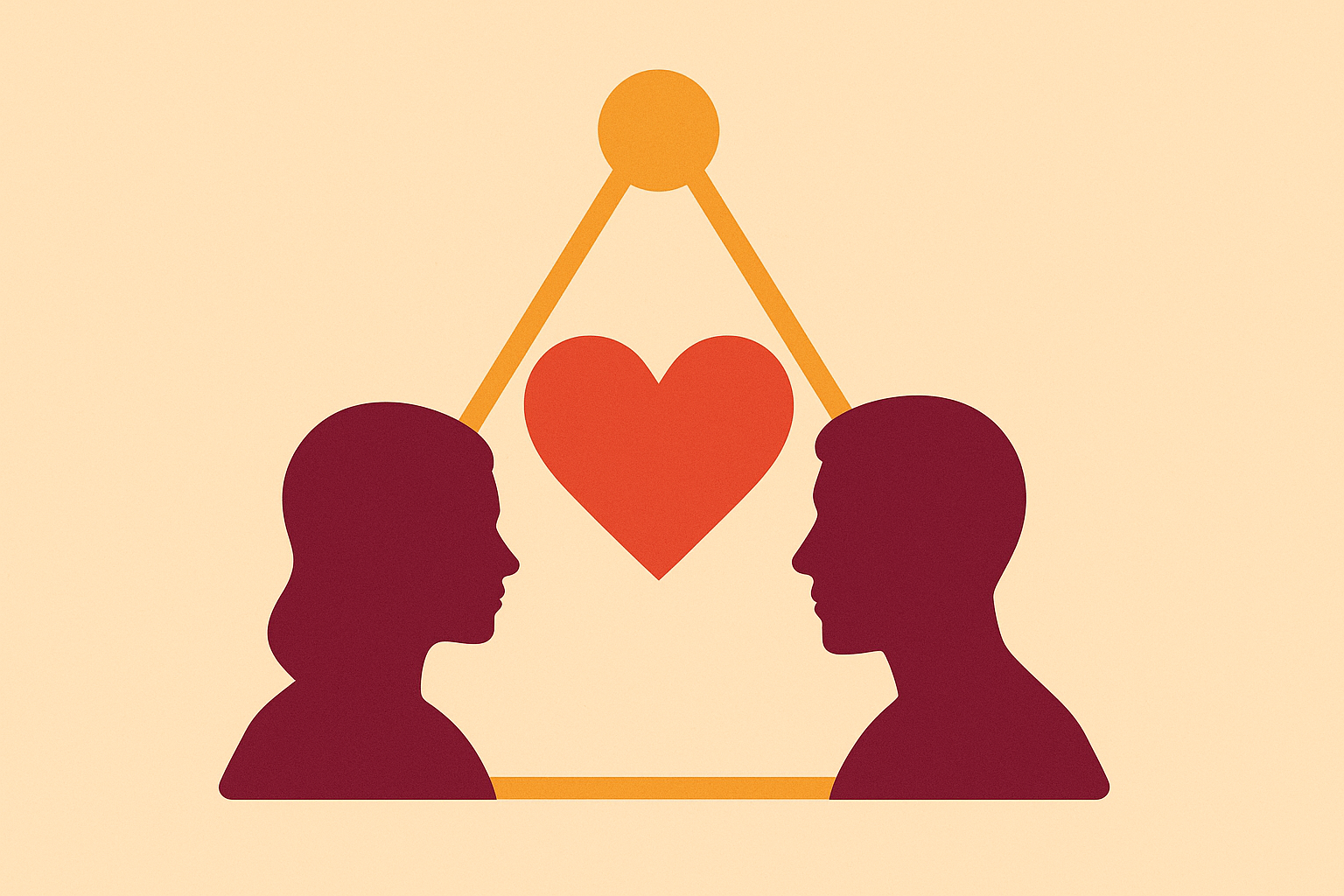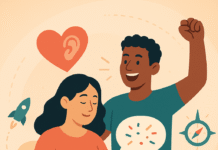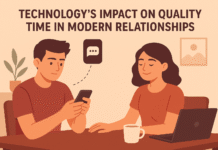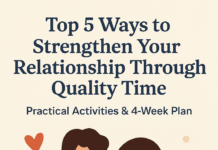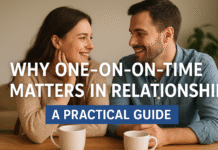Digital technologies have changed practically every area of human life in the last twenty years.
This includes how we start, stay in, and occasionally even end intimate relationships. Technology has transformed how we think about intimacy, availability, and trust. For example, individuals used to chat online and flirt over email, but now many people utilize messaging apps, video calls, and social media. The essay talks about how technology affects relationships in both good and bad ways. Then it presents six recommendations on how to use technology to improve communication and make emotional ties stronger instead of weaker. These techniques will help you use technology to chat to your spouse more deliberately, whether you’re dating online, in a long-distance relationship, or just wish to talk to your partner better.
1. How technology has transformed how people talk to each other
The Growth of Online Dating
It’s normal to meet people online now thanks to dating platforms like Tinder, Bumble, and OkCupid. Pew Research says that 30% of adults in the U.S. have used a dating site or app. Of those, 12% have married or been in a serious relationship with someone they met online.
Partners can now share pictures, updates on their status, and “relationship anniversaries” on social media to let the public know about their connection. This might help people feel like they are part of a group, but it can also make them feel like they need to do better and worry about how they stack up against others.
2. Connections and expectations that are always on
Because of messaging programs like WhatsApp, Messenger, and iMessage, “I’ll text you later” has become “I’ll text you in five minutes.” When partners have cellphones at their fingertips, they may feel like they have to answer immediately away, which can be stressful when response times are delayed.
Video calls like Zoom and FaceTime let couples who live far away see each other “live.” But they can also acquire “Zoom fatigue,” which is when being online all the time makes you feel fatigued.
3. Good Effects
- Easier to get to. Technology lets people who are far apart talk to each other. People who are in a long-distance relationship can eat together over video chat, give each other voice notes saying “good morning,” or play games online together.
- Digital experiences that are shared. Streaming services that let people watch movies together or Spotify playlists that people can work on together are similar things people do in real life.
- Places where you can express anything you want without fear. People who are socially apprehensive may feel safer chatting to people online than in person. This might make them feel better.
4. Bad Effects
- The word “phubbing” comes from the phrases “phone” and “snubbing.” “Phubbing” is when one partner overlooks the other in favor of their phone or other device. Research indicates that 42% of unmarried couples and 25% of married couples report that their partner’s phone usage makes them feel neglected.
- A culture of making comparisons. Seeing flawless photographs of other couples on social media can make people feel horrible about their own relationships because social media only highlights the “best moments.”
- Limits are being broken. When one spouse feels like they are always on call, it can be hard to recognize the difference between “work time,” “me time,” and “us time.”
- Concerns with privacy and trust. If one partner reads the other partner’s messages without permission, it can make them suspicious, especially if they can easily access each other’s devices and internet activity.
The Psychology of Talking to People Online
We can utilize technology more cautiously if we know how it influences our ideas and actions.
- Less body language. People can get the tone and meaning of SMS messages wrong. Emoticons and GIFs try to address this void, but studies show that they only partially make up for the loss of tone of voice and facial emotions.
- Too many options for customizing. The “hyper-personal model” claims that people often communicate more intimate and emotional information about themselves online. This can bring people closer together, but it can also make fights worse if people don’t understand each other.
- Fear of Missing Out (FOMO). Partners may feel nervous and jealous when they observe each other talking to other people without them.
Six Ways to Talk to People on the Internet
Here are six strategies for you and your spouse to chat to each other online that are founded on evidence and will help you get closer, avoid disagreements, and give each other space.
- Make sure you know how to talk to each other.
You and your spouse should agree on “response windows.” Talk about how quickly you want essential messages to be answered (for example, within two hours) and set apart periods when you both won’t be online, like during meals or just before bed.
Please explain what “urgent” and “not urgent” mean. Use keywords or emojis to identify messages that need to be responded right away (for example, 🔴 for urgent) so that recipients know when to anticipate a response.
Why it works: When you and your spouse agree on what you expect from each other, it makes it less annoying when you feel ignored or too available. It also gives you both the power to respect each other’s time. - Use tools that can perform more than one thing.
Get the appropriate balance of text, speech, and video. If individuals keep getting your messages wrong, try sending a quick audio note or FaceTime call instead to get your point across.
Use apps that enable you work with other people. Google Keep and Trello are examples of shared calendars, to-do lists, and playlists that let people work together and meet their goals.
Why it works: Different styles of talking to one other work well together, which makes things easier and more meaningful. - Set aside time for both of you to be “tech-free.”
Digital detoxes on a regular basis. Once a week, turn off your phones, iPads, and computers.
Rotations for dating nights. Change up who planned tech-free activities like cooking together or playing board games to keep things interesting.
Why it works: When you unplug on purpose, notifications and digital distractions become less tempting, which makes people want to get together in person again. - Be careful when you send texts.
Read it again before you mail it. When things get hot, take a second to think about whether the tone sounds like you’re blaming someone.
Say “I.” Instead of stating “You ignored me,” try expressing “It hurt me when I didn’t hear back from you.” This makes it clear how you feel without criticizing anyone.
Why it works: Mindful language makes it easier for individuals to understand one other and not be defensive, which helps settle fights. - Keep your privacy safe and earn people’s confidence online
Make sure that only a small number of people can utilize the devices. You and the other person should discuss about whether it’s alright to look at each other’s screens or if private locations should stay that way.
Everyone should be on the same page about the regulations for social media. Talk about the regulations for “tagging,” sharing images of you and your spouse, or following each other’s friends so you don’t get mixed up.
How it works: Clear privacy rules keep people from snooping on each other and make sure everyone is kind. - Accept Digital Routines
Morning check-ins. Send each other a quick voice note or GIF that says “good morning” to express that you care.
At the end of the day, there are recaps. Before you go to bed, text each other one nice item and one unpleasant thing that happened to you that day.
Why it works: Talking to each other often makes things more stable and safe, even when you’re not together in person.
Questions that people often ask (FAQs)
Q1: Is it bad for a relationship to text a lot?
A: Yes. If you merely read the words, you might not get the complete story because you can’t see the body language. People could also get sick of “over-communication.” You should mix up texts, calls, and time spent together.
Q2: Is “phubbing” a huge deal?
A: Studies demonstrate that phubbing makes people less trustworthy and emotionally connected, which decreases relationship happiness. To deal with it, make sure there are times and places where individuals can’t use their phones.
Q3: How can couples who don’t live close to each other keep in touch?
A: You can talk to each other in many ways, like on video dates, at virtual viewing parties, or by playing online games together. People can also get closer by sending GIFs in the morning and doing other digital routines every day.
Q4: What should partners do if they grow jealous of each other on social media?
A: You should converse to each other. Talk about how you feel without criticizing anyone. Tell them what you don’t want to express in public, and be honest to establish trust.
Q5: Are there tech tools that only couples can use?
A: Yes, there are apps made exclusively for couples, such Love Nudge, Between, and Raft. These applications offer shared calendars, private chat rooms, and reminders to help couples become closer to each other.
Q6: When is it time to stop texting and start talking or video chatting?
A: If a conversation gets heated or you think there is a misunderstanding, use a voice call or video chat to let the other person know how you feel.
Last Thoughts
In the digital age, technology may either help or hinder our most important relationships. You may get the most out of digital tools while keeping your emotional connection strong by learning how they work in your mind and following six particular principles, such as setting rules for how to talk to each other and establishing tech-free routines. Keep in mind that being intentional is important: technology should make your relationship better, not worse.
Couples can get closer, trust each other more, and develop new traditions even when they’re not together if they’re mindful about how they use technology. We need to modify the way we talk to each other as technology advances. In your modern relationship, embrace the positive and avoid the negative. Instead of a barricade, let technology be a bridge.
References
- Dating and Relationships in the Digital Age. Pew Research Center. (2019). Retrieved from https://www.pewresearch.org/internet/2020/05/08/dating-and-relationships-in-the-digital-age/
- Couples, the Internet, and Social Media. Pew Research Center. (2014). Retrieved from https://www.pewresearch.org/internet/2014/02/11/couples-the-internet-and-social-media/
- Teens, Technology and Romantic Relationships. Pew Research Center. (2015). Retrieved from https://www.pewresearch.org/internet/2015/10/01/teens-technology-and-romantic-relationships/
- Technological and Social Media Influence on Marital Relationships in 2024. Cooper Law Firm. (2024). Retrieved from Cooper Trachtenberg Law Group
- Phubbing. Wikipedia. (2025). Retrieved from https://en.wikipedia.org/wiki/Phubbing
- Emotions in Virtual Communication. Wikipedia. (2025). Retrieved from https://en.wikipedia.org/wiki/Emotions_in_virtual_communication
- Majority of Teens Admit They Feel Happy When They Don’t Have Their Phones. Parents.com. (2023). Retrieved from https://www.parents.com/teens-and-adults-admit-spending-too-much-time-on-phones-8607188
- What Men Share on Social Media But Not With You. Time. (2013). Retrieved from https://time.com/9268/why-men-hide-their-feelings-behind-social-media/




























